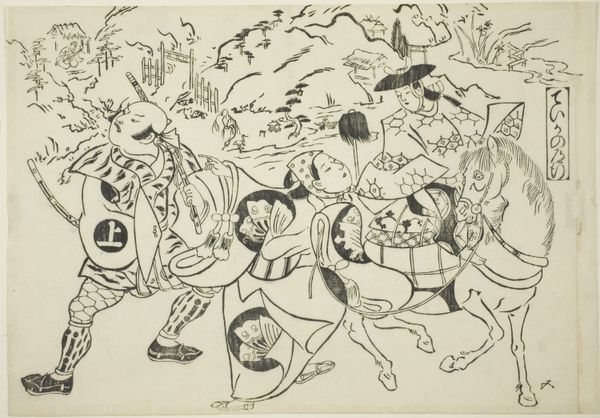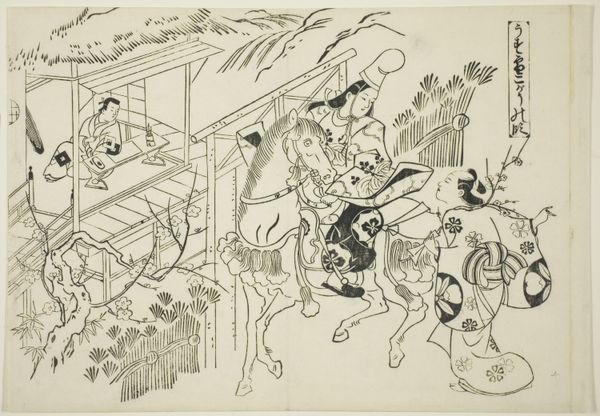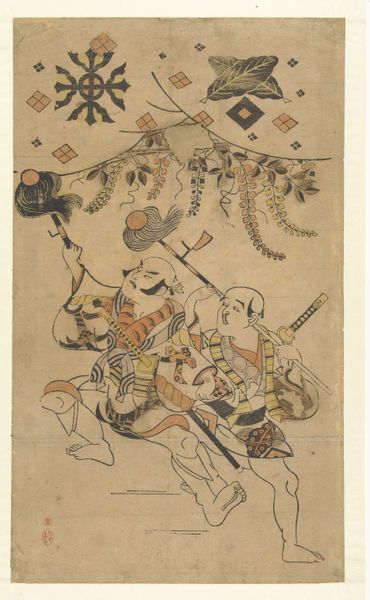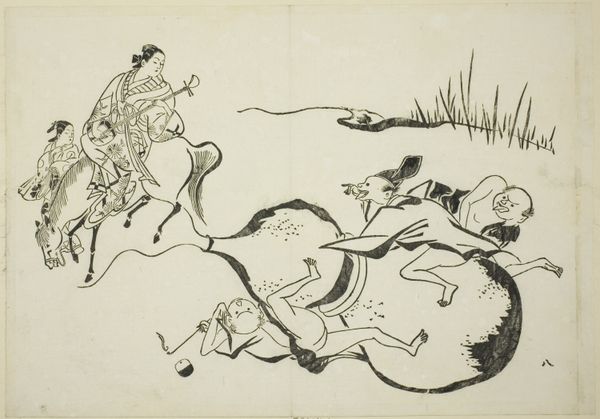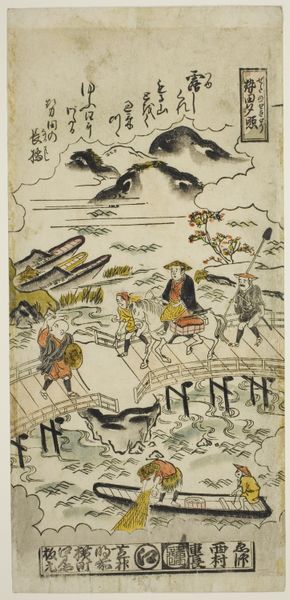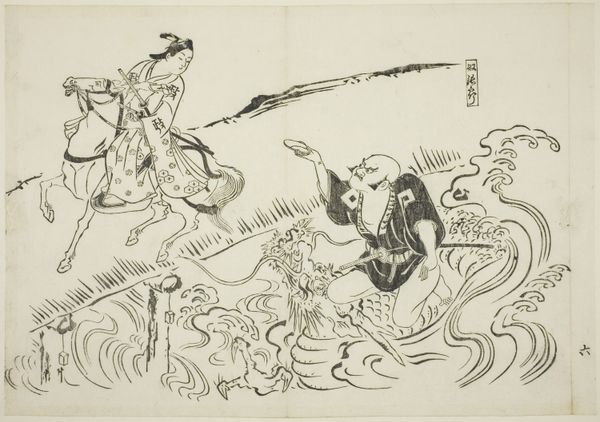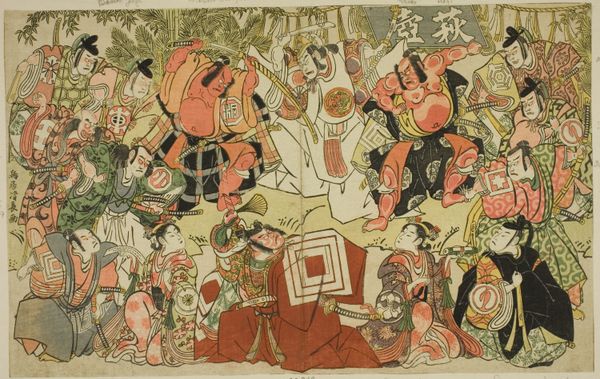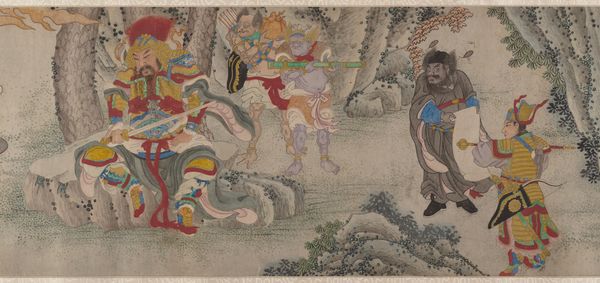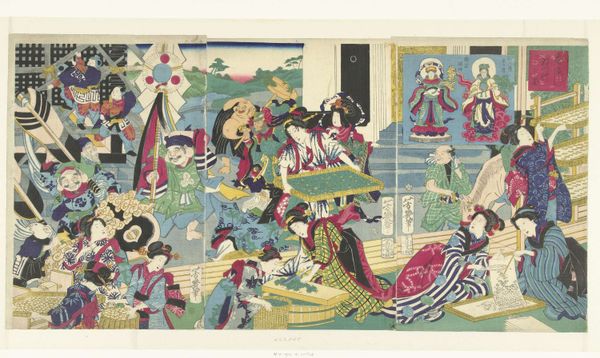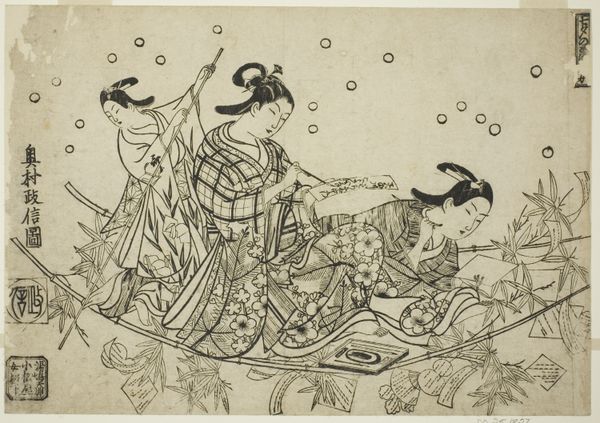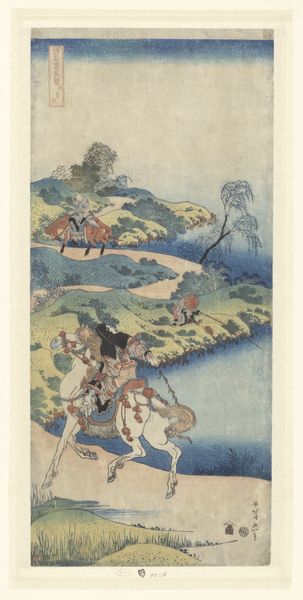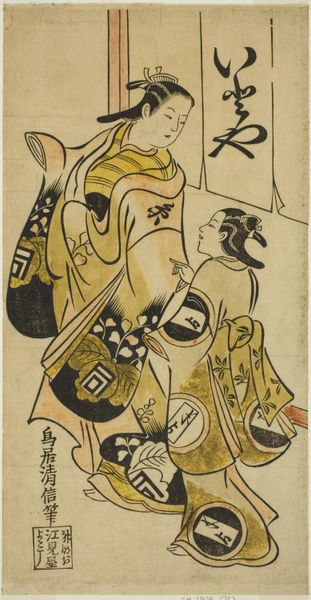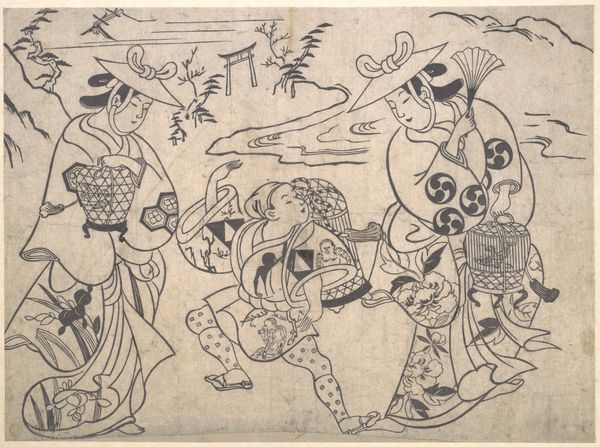
Fujiwara no Teika on Horseback Accompanied by Ōe Saemon and The Woman Nowake c. 1710
0:00
0:00
print, woodblock-print
#
narrative-art
# print
#
asian-art
#
landscape
#
ukiyo-e
#
japan
#
figuration
#
woodblock-print
Dimensions: 23 1/4 × 11 3/4 in. (59 × 29.9 cm) (image, sheet, vertical ō-ōban)
Copyright: Public Domain
Curator: Here we have an intriguing woodblock print from around 1710, attributed to Torii Kiyomasu. It's entitled "Fujiwara no Teika on Horseback Accompanied by Ōe Saemon and The Woman Nowake." It is a narrative scene within a landscape setting, very typical for ukiyo-e prints. Editor: My immediate impression is of a theatrical procession frozen mid-scene. There's a dreamlike quality to the composition. Curator: Indeed, the Torii school, to which Kiyomasu likely belonged, were key figures in promoting Kabuki theater through their prints. Figures are set against this mountainous background which appears very stylized. You'll notice the exaggerated poses which were common at the time and aimed to capture a dynamic sense of movement. Editor: That stylization lends itself well to exploring how the work uses stereotypes. The male figures are depicted with very rigid facial expressions. The woman seems much softer. Does this representation uphold certain societal expectations about gender roles? Curator: I think your point about the figures and gender roles is spot on. Look, for instance, at the prominence given to Fujiwara no Teika and Ōe Saemon—they lead the eye. Nowake is depicted very close to a horse, which emphasizes her place within the visual and social hierarchy. We need to remember that the ukiyo-e tradition flourished under the Edo period shogunate and how artists may have chosen to engage with such expectations. Editor: And beyond the surface narrative, I think it's imperative to examine what social power dynamics are embedded within the imagery itself. What values does the work prioritize, and whose voices or perspectives might be marginalized? Curator: An excellent question. We must not only interpret what's represented, but also what the artist deliberately chose to omit and how the contemporary viewing public may have related with this work. The context of artistic patronage also plays a significant role, since their commissions directed which aspects of society should be celebrated, ignored, or scrutinized. Editor: Considering this artwork within a larger socio-political landscape reveals its value not merely as a representation but also as an artifact that encapsulates societal nuances and complex hierarchies that either resisted or adhered to tradition. Curator: This piece provides a valuable glimpse into the aesthetics, social structure, and even the theatrical sensibilities of its time. Its significance as a historic and cultural document should not be overlooked.
